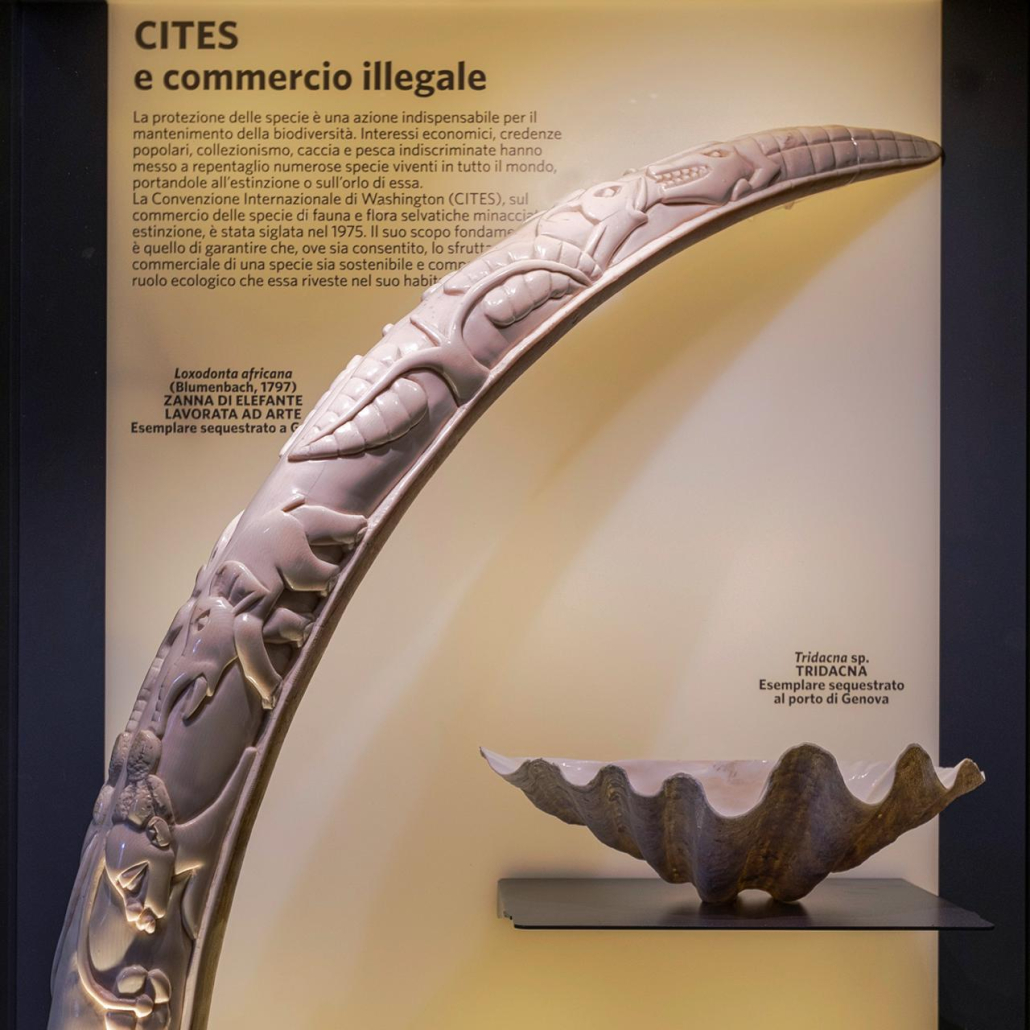THEMATIC SHOWCASES
5. Anthropogenic and climatic extinctions
The Po Valley is now heavily populated. Small areas of natural habitat remain in our region as remnants of an ecosystem that has been destroyed by human activity. Biodiversity has been severely affected by this reduction and fragmentation of habitats. Many species, both plant and animal, have seen their existence compromised to the point of local or total extinction.
6. Environmental protection and sustainability
Natural history museums inform citizens about the conservation status of species living in the area. This task involves monitoring populations, adopting conservation practices, encouraging the development of knowledge and transferring information.
Debunking clichés, beliefs and convictions about snakes is, for example, a priority objective, as widespread popular hostility towards snakes must be countered with great effort by demonstrating the valuable ecological role of these predators.
7. Museums and biodiversity
Even ancient museum collections are a veritable archive of faunal data. Taxidermied specimens, if accompanied by metadata (e.g. place and date of collection), collectively provide a window onto past biodiversity. Scientific research reveals the dynamics caused by human impact and the evolution resulting from natural changes in the biodiversity of a place.
8. CITES and illegal trade
Species protection is essential for maintaining biodiversity. Economic interests, popular beliefs, collecting, indiscriminate hunting and fishing have endangered numerous species around the world, leading them to extinction or on the brink of it.
The Washington International Convention (CITES) on trade in endangered species of wild fauna and flora was signed in 1975 to ensure that, where permitted, the commercial exploitation of a species is sustainable and compatible with its ecological role in its habitat.
9. Private collecting
The art of collecting is inherent in human nature. Owning and organising artefacts can be a satisfying pastime, but also an important contribution to the preservation of biological memory. Over time, private collections have generated not only satisfaction and fulfilment for collectors, but also made an important contribution to the enrichment of natural history museums, taking on a scientific role and educational value thanks to donations or acquisitions.
10. Geographical expeditions
Throughout history, there have been many pioneers and explorers. The thirst for knowledge and the need to find new resources have led some human beings to undertake great ventures, becoming the architects of extraordinary socio-cultural changes.
These discoveries changed geography, botany and zoology, but also eating habits, fashions, museums and collecting, moving animals, plants and knowledge from one continent to another.
11. Evolution
Evolution is the mechanism that produces diversity in life.
Understood after many years of research and described in 1859 by Charles Darwin with the publication of his Theory of Evolution by Natural Selection, this biological process of change has shaped species over time, generating easily observable phenomena such as evolutionary convergence, artificial selection, biogeography and phylogenetic descent.



